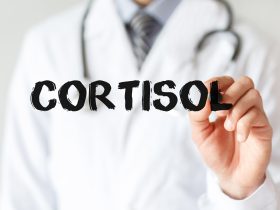Stomach cramps accompanied by diarrhea or constipation are common occurrences for many people, typically resolving without much concern. However, when these symptoms become frequent and severe, it may indicate a more serious condition such as Crohn’s disease. Seeking medical evaluation from a doctor is crucial for an accurate diagnosis.
Crohn’s disease affects a significant number of Americans, with estimates suggesting up to 700,000 individuals living with the condition.
While there is no cure for Crohn’s disease, various treatment options are available to help manage its symptoms and improve quality of life. Consulting with a healthcare professional can provide personalized guidance on managing the condition effectively.
The Common Symptoms of Crohn’s Disease
Symptoms of Crohn’s disease can vary widely depending on the individual and the specific area of the gastrointestinal tract affected by the condition.
In the lower gastrointestinal tract, particularly the colon, common symptoms may include abdominal pain and cramps, presence of blood in the stool, diarrhea, drainage from a painful sore near the anus, urgency in bowel movements, feeling of incomplete emptying of the bowels, loss of appetite, and constipation which may result in bowel obstruction.
At the same time, there are concerns about weight loss related to Crohn’s disease.
Similar symptoms may also manifest if Crohn’s disease affects the upper gastrointestinal tract, such as the small intestine, though they may be less pronounced.
In some cases, Crohn’s disease may exhibit no symptoms initially, a condition known as silent Crohn’s. However, subsequent symptoms may include more serious complications like intestinal blockage, infection or abscess, persistent pain or fever, and the formation of fistulas or tunnels connecting different parts of the intestine.
Crohn’s disease can also impact overall health, leading to fatigue, occasional fever, mouth sores, night sweats, and irregularities in menstrual cycles.
Symptoms can vary in severity, with some individuals experiencing mild effects while others may face significant weakness. In severe cases, Crohn’s disease can result in severe complications, underscoring the importance of timely medical intervention and management.
Complications of Crohn’s Disease
Complications associated with Crohn’s disease can be divided into two categories: local, which primarily affect the intestinal tract, and systemic, which impact the entire body.
Local complications may include the formation of abscesses, which are pockets of pus resulting from bacterial infection either on the intestinal wall or near the anus. These abscesses can cause swelling, tenderness, pain, and fever, and are typically treated with antibiotics.
Fissures, or painful tears in the lining of the anus, may also occur, leading to bleeding during bowel movements, and are commonly treated with topical therapies and sitz baths.
Fistulas, which are sores or ulcers that develop into openings connecting different parts of the intestine or nearby tissues like the bladder or skin, may require antibiotics for smaller ones or surgery for larger or multiple fistulas.
Other local complications include malabsorption and malnutrition, as Crohn’s disease can affect the small intestine’s ability to absorb nutrients, leading to deficiencies that require replacement therapies.
Small intestinal bacterial overgrowth (SIBO) may also occur, resulting in symptoms such as gas, bloating, belly pain, and diarrhea, which can be managed with antibiotics.
Strictures, or narrowed areas of the intestine due to inflammation, may cause cramping, belly pain, and bloating, and may require medication or surgery for severe cases.
Systemic complications of Crohn’s disease can affect various parts of the body, including the joints, skin, bones, eyes, kidneys, liver, pancreas, and physical development.
Joint inflammation, or arthritis, is a common systemic complication, causing pain, swelling, and stiffness, particularly in peripheral joints such as elbows and knees, or axial joints like the spine.
Skin problems like erythema nodosum and pyoderma gangrenosum may occur, along with mouth ulcers and bone loss, often exacerbated by the use of corticosteroid medications.
Vitamin D deficiency is common and can exacerbate bone loss, while eye problems like episcleritis, scleritis, and uveitis may also occur.
Kidney issues such as kidney stones, hydronephrosis, and fistulas, as well as liver problems like fatty liver disease, gallstones, hepatitis, and primary sclerosing cholangitis, are potential systemic complications.
Finally, physical development problems like growth failure and delayed puberty may occur, especially in children with Crohn’s disease. Early detection and management of these complications are essential to minimize their impact on the quality of life of individuals with Crohn’s disease.
Crohn’s Disease Diarrhea Causes
Several factors contribute to diarrhea in individuals with Crohn’s disease, with inflammation being the primary trigger. Inflammation disrupts normal gut function and leads to various complications:
Fluid and electrolyte imbalances occur when inflammation affects the function of electrolytes like sodium and chloride, leading to an accumulation of water in the gut and resulting in diarrhea.
Damage to the gut lining occurs as inflammation damages the epithelial cells that form a protective barrier in the intestines. When this barrier is compromised, proteins and bacteria can leak into the body, causing further inflammation and worsening diarrhea.
Altered microbiome, or dysbiosis, refers to disruptions in the balance of bacteria, viruses, and fungi in the gut. Factors like antibiotics, poor diet, smoking, or stress can upset this balance, leading to an overgrowth of unfriendly bacteria and a decrease in bacterial diversity. This imbalance can exacerbate inflammation and contribute to persistent diarrhea even after the gut has healed.
Bile acids play a role in digestion, but excessive bile production or improper bile utilization can lead to bile acid diarrhea (BAD). BAD can cause urgent bowel movements and difficulty controlling urine, and it is common in individuals with Crohn’s disease.
Overall, understanding the complex interplay between inflammation, gut integrity, microbiome balance, and bile acid regulation is crucial for managing diarrhea in Crohn’s disease effectively. Treatment strategies often focus on reducing inflammation, restoring gut barrier function, rebalancing the microbiome, and addressing bile acid abnormalities to alleviate symptoms and improve quality of life.
Differences and Similarities Between Crohn’s Disease and Ulcerative Colitis
Crohn’s disease and ulcerative colitis are often mistaken for each other due to their similar symptoms and patterns of flare-ups and remission.
However, there are key differences between the two conditions.
Crohn’s disease can affect any part of the digestive tract, from the mouth to the anus, and can involve the entire thickness of the intestinal wall. In contrast, ulcerative colitis primarily affects the colon and rectum, and inflammation is typically confined to the innermost lining of the colon.
Additionally, the symptoms of Crohn’s disease can vary widely depending on the location and severity of inflammation, and may include abdominal pain, diarrhea, fatigue, weight loss, and nutritional deficiencies.
Ulcerative colitis, on the other hand, commonly presents with symptoms such as bloody diarrhea, abdominal pain, urgency to defecate, and rectal bleeding.
While both conditions share similarities in their symptomatology and treatment approaches, the distinction between Crohn’s disease and ulcerative colitis is important for determining the most appropriate management strategies.
Therefore, seeking medical evaluation and undergoing diagnostic tests are crucial steps in accurately diagnosing and effectively managing these inflammatory bowel diseases.















Find Us on Socials